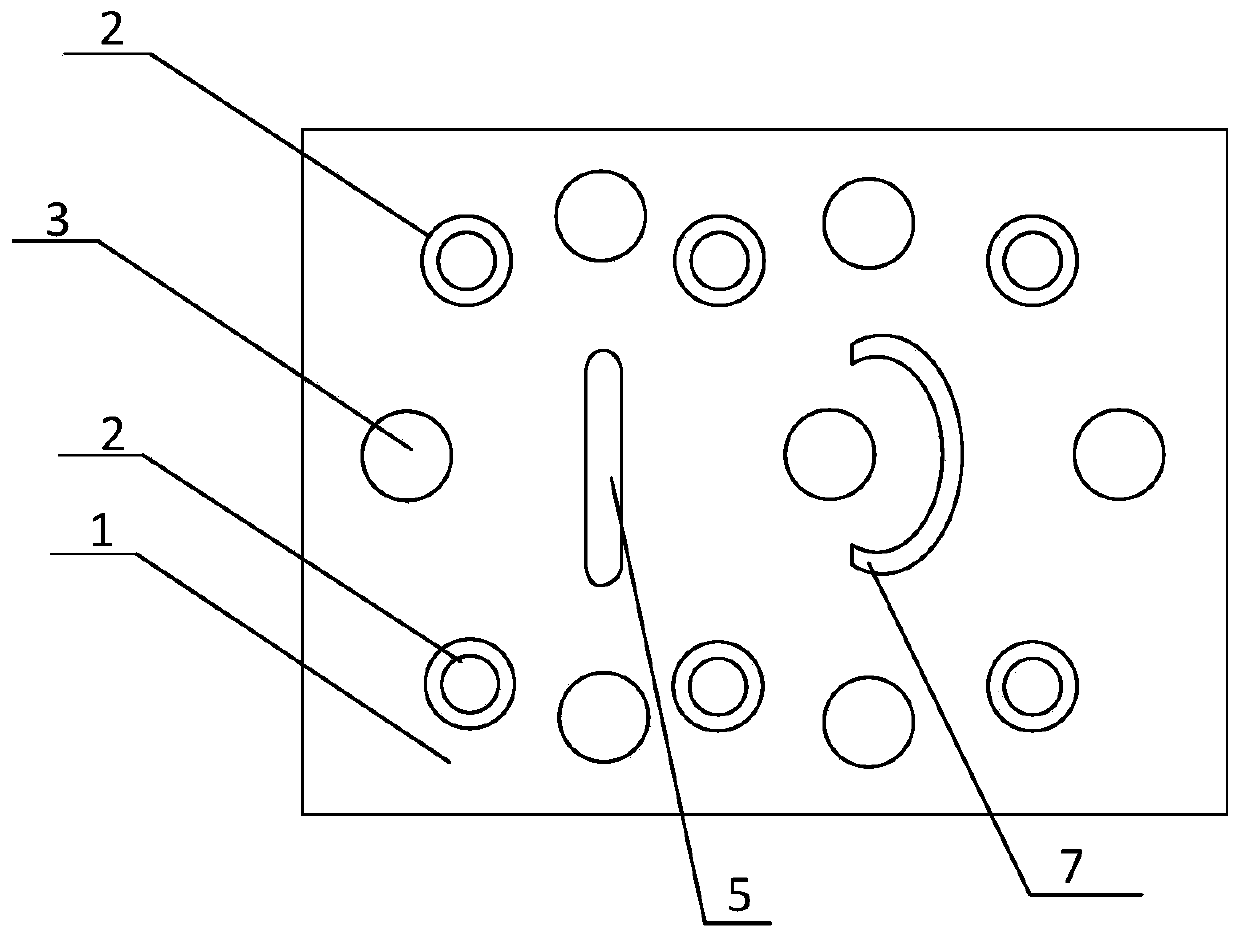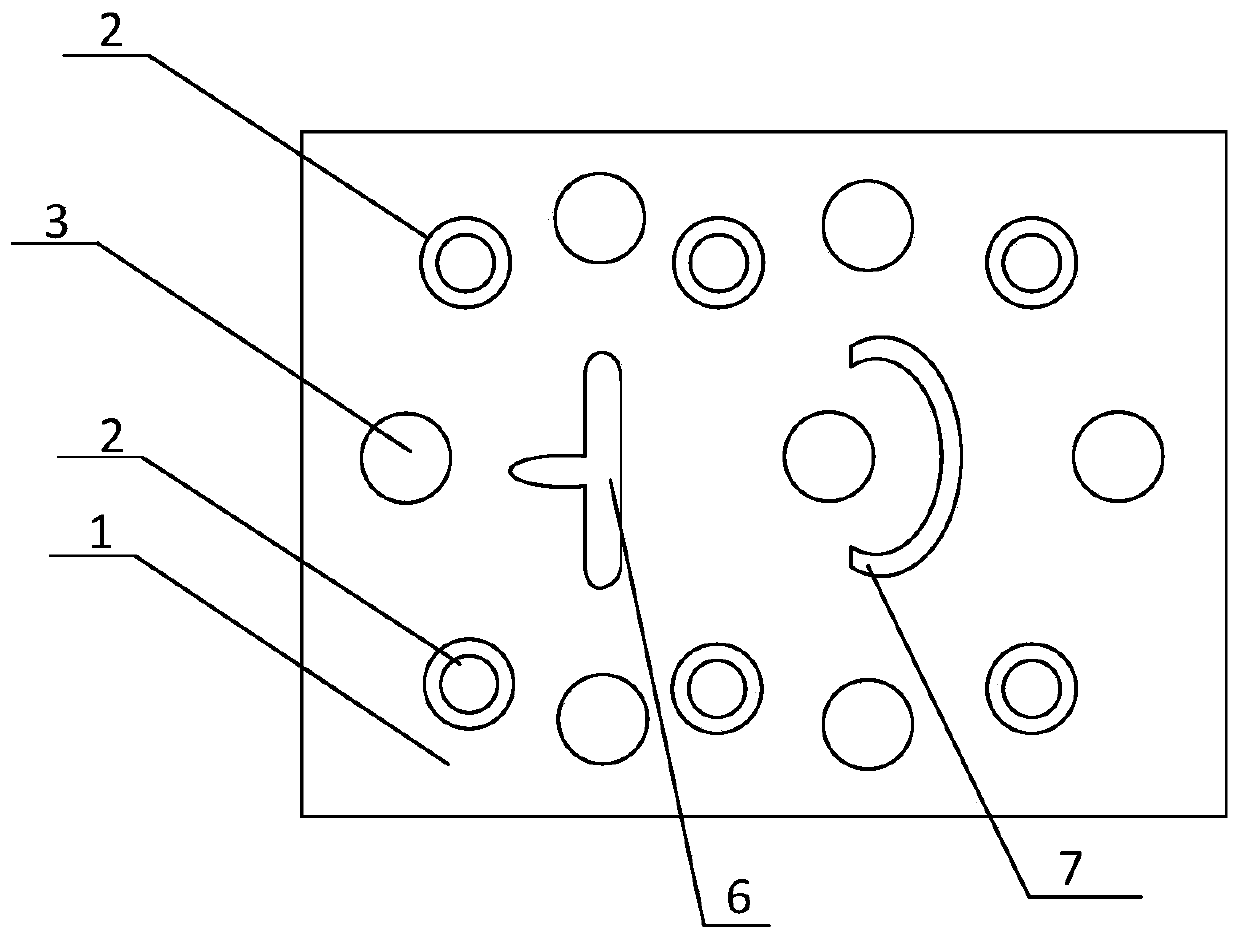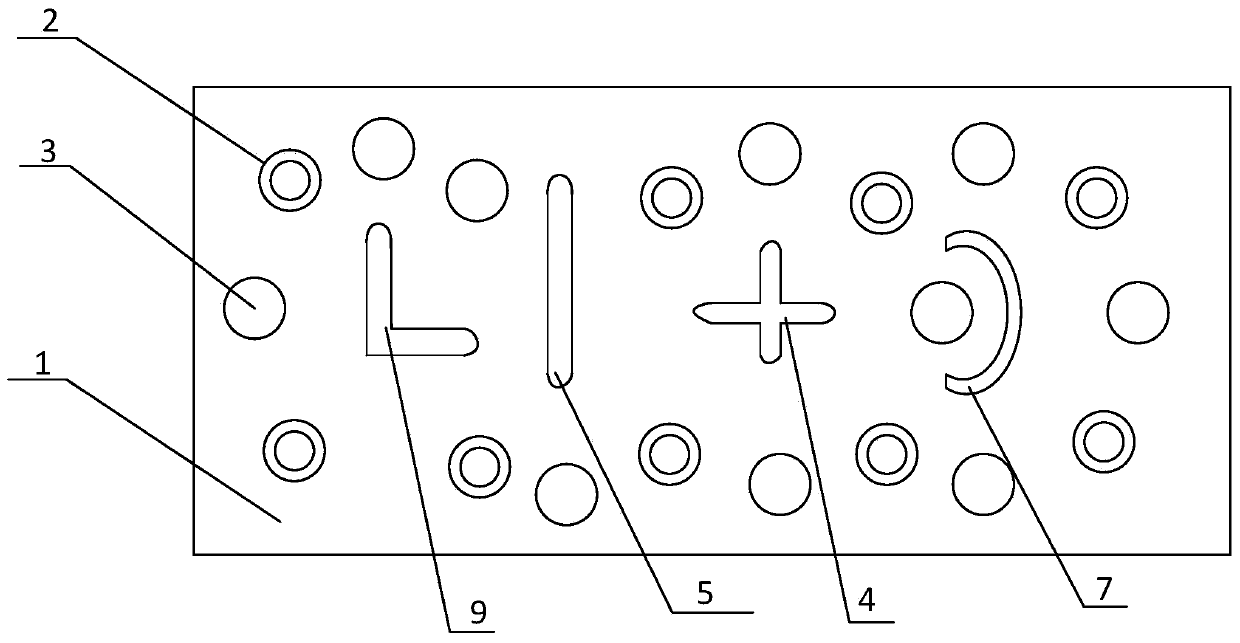Cross-coupling dielectric waveguide filter
A cross-coupling, dielectric waveguide technology, applied in the field of communications, can solve problems such as low squareness and inability to change the cross-zero structure, and achieve the effect of reducing impact, facilitating miniaturization and consistency, and improving out-of-band suppression
- Summary
- Abstract
- Description
- Claims
- Application Information
AI Technical Summary
Problems solved by technology
Method used
Image
Examples
Embodiment 1
[0029] like figure 1 As shown, this embodiment provides a 6th-order 4-notch cross-coupling dielectric waveguide filter, which corresponds to 3 groups of resonant holes, and specifically includes a ceramic dielectric body 1, and the outer side of the ceramic dielectric body is metallized to form a metal shield There are 3 groups of resonant holes on one side surface of the ceramic dielectric body, the two resonant blind holes in the vertical direction in the figure are a group, and from left to right are the first group, the second group and the third group. ; Each group of resonant holes includes two symmetrically arranged resonant blind holes 2; between each group of resonant holes is a through-slot penetrating the ceramic dielectric body, that is, two through-slots, one of which is an arc-shaped through-slot 7. The other through slot is an elongated through slot 5; several resonant cavities are separated by the through slot; a plurality of coupling blind holes 3 with adjusta...
Embodiment 2
[0031] like figure 2 As shown, this embodiment provides another 6th-order 4-notch cross-coupling dielectric waveguide filter, which corresponds to 3 groups of resonant holes, specifically including a ceramic dielectric body 1, and the outside of the ceramic dielectric body is metallized to form a metal Shielding layer; 3 groups of resonant holes are arranged on one side surface of the ceramic dielectric body. The two resonant blind holes in the vertical direction in the figure are a group, and from left to right are the first group, the second group and the third group. Each group of resonant holes includes two symmetrically arranged resonant blind holes 2; between each group of resonant holes, there is a through slot through the ceramic dielectric body, that is, two through slots, one of which is an arc-shaped through slot. Slot 7, the other through slot is a T-shaped through slot 6; several resonant cavities are separated by the through slot; a plurality of coupling blind h...
Embodiment 3
[0033] like image 3 As shown in the figure, a cross-coupling dielectric waveguide filter with 10th order and 6 notch waves includes a ceramic dielectric body 1, the ceramic dielectric body 1 is made of a high dielectric constant material, and the outer side of the ceramic dielectric body is formed by silver metallization to form a silver shield Floor. One side surface of the ceramic dielectric body 1 is provided with 5 groups of resonance holes, and each group of resonance holes includes two symmetrically arranged resonance blind holes 2 . Between the first group of resonant holes and the second group of resonant holes is set an L-shaped through slot 9 to form a coupling window; A cross-shaped through slot is arranged between the group of resonance holes and the fourth group of resonance holes, and the size of the arm slot of the cross-shaped through slot can be adjusted, so as to adjust the coupling amount between the two adjacent resonance holes 2; An arc-shaped through s...
PUM
 Login to View More
Login to View More Abstract
Description
Claims
Application Information
 Login to View More
Login to View More - R&D
- Intellectual Property
- Life Sciences
- Materials
- Tech Scout
- Unparalleled Data Quality
- Higher Quality Content
- 60% Fewer Hallucinations
Browse by: Latest US Patents, China's latest patents, Technical Efficacy Thesaurus, Application Domain, Technology Topic, Popular Technical Reports.
© 2025 PatSnap. All rights reserved.Legal|Privacy policy|Modern Slavery Act Transparency Statement|Sitemap|About US| Contact US: help@patsnap.com



